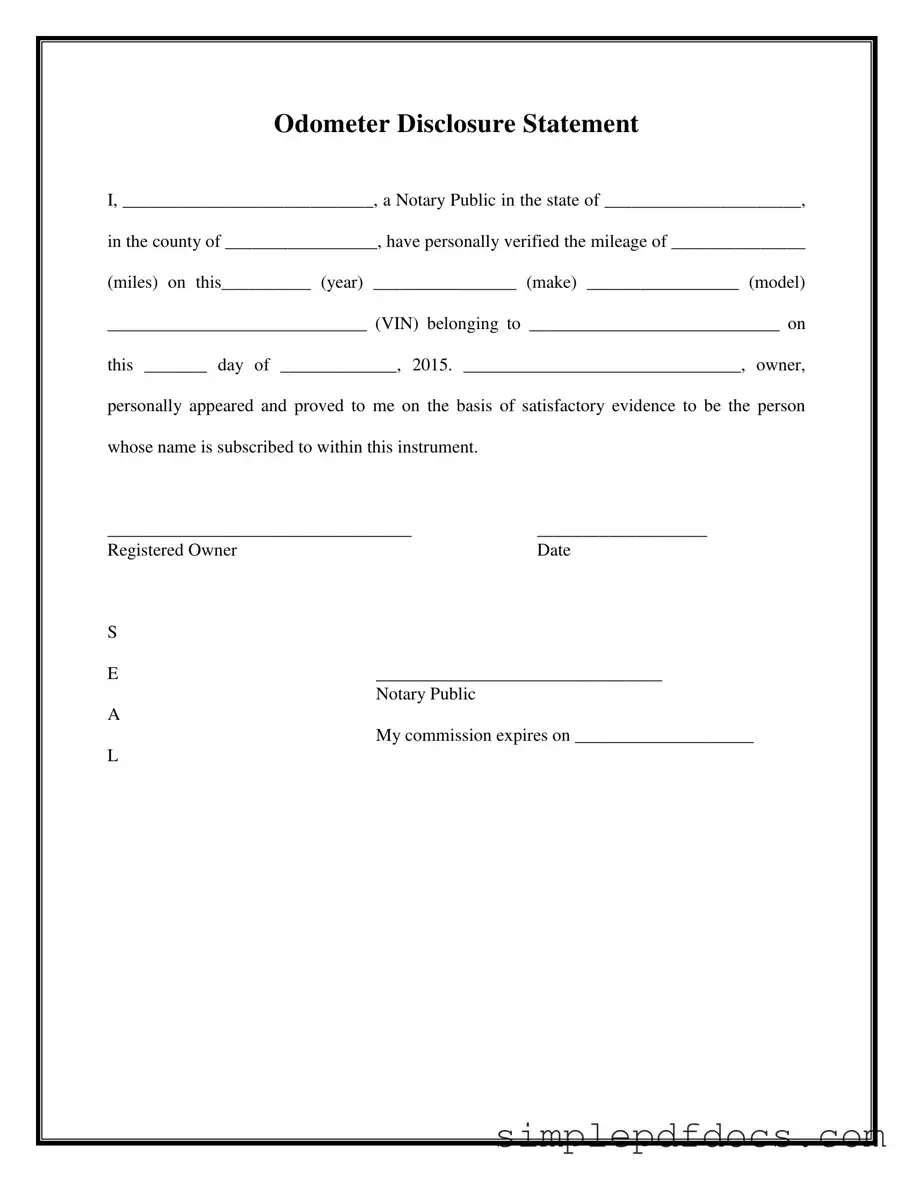Fill Your Notarized Odometer Statement Form
The Notarized Odometer Statement form serves as a legal document that verifies the mileage of a vehicle at the time of sale. This statement is crucial for ensuring transparency and preventing odometer fraud during vehicle transactions. By requiring notarization, the form adds an extra layer of authenticity, confirming that the information provided is accurate and trustworthy.
Get Document Here
